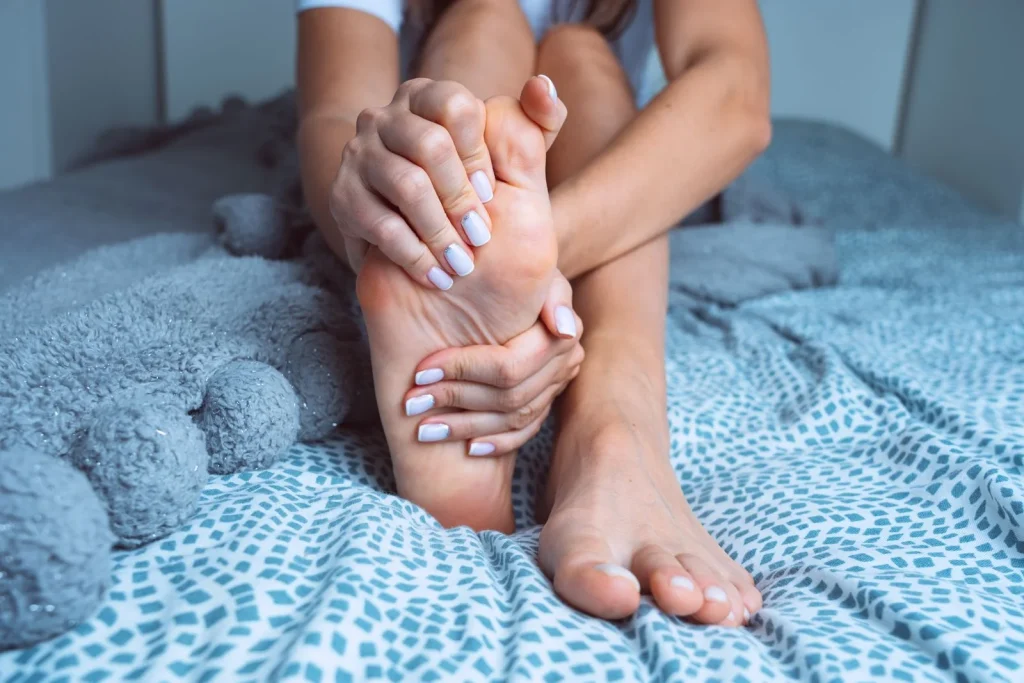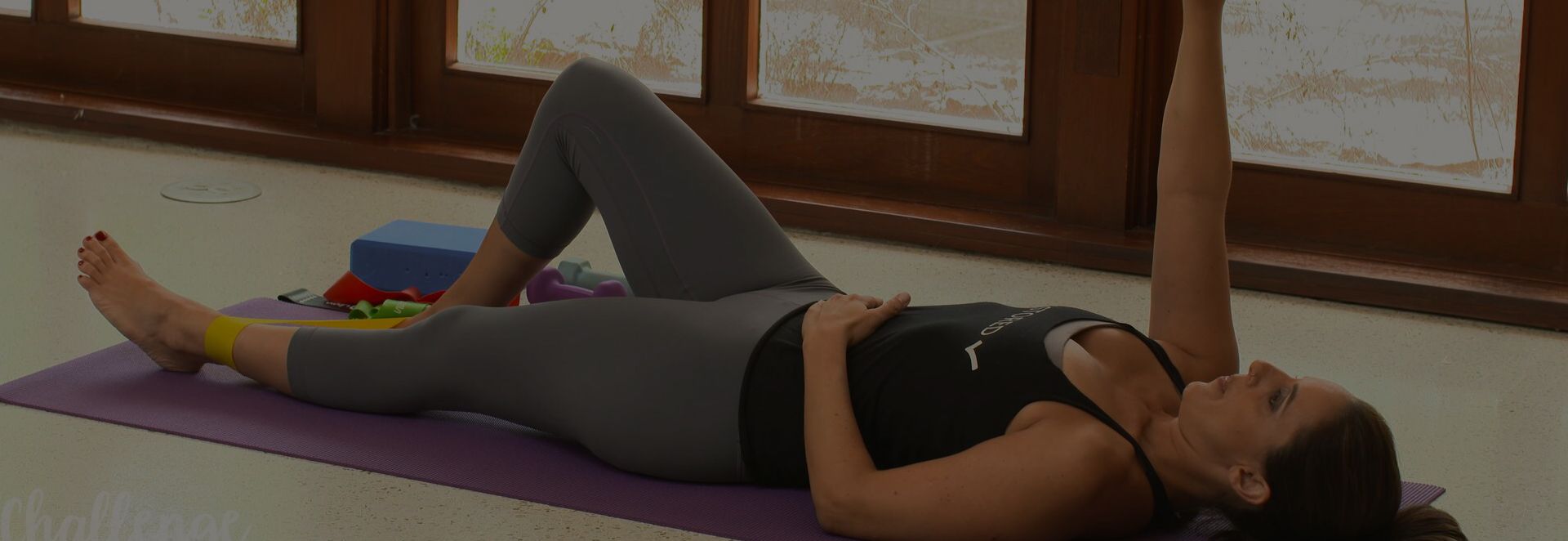Resources
- Pelvic Floor Exercises for Constipation: Awareness, Movement, and Nervous System Relief
- High-Tone Pelvic Floor Dysfunction: Symptoms, Causes & Relief Tips
- How Menopause Affects the Pelvic Floor: Symptoms, Support & Hormonal Impact
- Tailbone Wagging for Tailbone Pain Relief and Pelvic Floor Mobility
- The Power of Tremoring: How Tension Release Exercises Support Your Nervous System
- Pelvic Floor Postpartum Exercises for Faster Recovery
- Navigating Coccyx Pain in Pregnancy: A Trimester-by-Trimester Guide
- Understanding Coccyx Pain: Symptoms, Causes, Healing and Prevention
- Pilates and Pelvic Floor Dysfunction: Is It the Solution You’re Seeking?
- 5 Pilates Pelvic Floor Exercises You Don’t Want to Leave Out
- Pelvic Floor Massage: A Comprehensive Guide
- Does Pilates Strengthen Pelvic Floor Muscles? A Comprehensive Guide
- Hypermobility and Pelvic Floor Health: What You Need to Know
- Understanding Pelvic Floor Pain After Running: Causes and Solutions for Professionals
- Top 5 Exercises to Strengthen the Pelvic Floor
- Do Squats Strengthen Pelvic Floor Muscles? Insights for Movement Professionals
- How Pelvic Floor Health Is Related to the Process of Moving from Arousal to Orgasm
- 5 Things I Wish People Knew About Your Pelvic Floor & Orgasm
- Pelvic Floor Tension: Everything You Need to Know
- How Running and Pelvic Floor Health Are Interconnected: What Every Runner Should Know
- Does Running Strengthen Pelvic Floor Muscles? Myths vs. Facts
- Understanding Urine Leakage Causes: Why It Happens and How to Manage It
- How to Strengthen Your Pelvic Floor: The Ultimate Guide
- Strengthening and Restorative Yoga Poses for Full Body Health
- Understanding Queefing: Causes, Symptoms, and Simple Prevention Tips
- How Do You Know if You Have a Weak Pelvic Floor
- What Does Pelvic Floor Pain Feel Like?
- How Can I Strengthen My Pelvic Floor Without Kegels?
- Pelvic Floor Stretches | 5 Quick Ways To Relax Your Pelvis
- Pelvic Floor Specialist | Finding Help To Heal Your Pelvis
- Is Pelvic Floor Repair Major Surgery? | Pelvic Health Guide
- Pelvic Floor Exercise
- How to Strengthen Pelvic Floor
- Pelvic Floor Therapy | Improving Your Pelvic Health
Resources
- Pelvic Floor Exercises for Constipation: Awareness, Movement, and Nervous System Relief
- High-Tone Pelvic Floor Dysfunction: Symptoms, Causes & Relief Tips
- How Menopause Affects the Pelvic Floor: Symptoms, Support & Hormonal Impact
- Tailbone Wagging for Tailbone Pain Relief and Pelvic Floor Mobility
- The Power of Tremoring: How Tension Release Exercises Support Your Nervous System
- Pelvic Floor Postpartum Exercises for Faster Recovery
- Navigating Coccyx Pain in Pregnancy: A Trimester-by-Trimester Guide
- Understanding Coccyx Pain: Symptoms, Causes, Healing and Prevention
- Pilates and Pelvic Floor Dysfunction: Is It the Solution You’re Seeking?
- 5 Pilates Pelvic Floor Exercises You Don’t Want to Leave Out
- Pelvic Floor Massage: A Comprehensive Guide
- Does Pilates Strengthen Pelvic Floor Muscles? A Comprehensive Guide
- Hypermobility and Pelvic Floor Health: What You Need to Know
- Understanding Pelvic Floor Pain After Running: Causes and Solutions for Professionals
- Top 5 Exercises to Strengthen the Pelvic Floor
- Do Squats Strengthen Pelvic Floor Muscles? Insights for Movement Professionals
- How Pelvic Floor Health Is Related to the Process of Moving from Arousal to Orgasm
- 5 Things I Wish People Knew About Your Pelvic Floor & Orgasm
- Pelvic Floor Tension: Everything You Need to Know
- How Running and Pelvic Floor Health Are Interconnected: What Every Runner Should Know
- Does Running Strengthen Pelvic Floor Muscles? Myths vs. Facts
- Understanding Urine Leakage Causes: Why It Happens and How to Manage It
- How to Strengthen Your Pelvic Floor: The Ultimate Guide
- Strengthening and Restorative Yoga Poses for Full Body Health
- Understanding Queefing: Causes, Symptoms, and Simple Prevention Tips
- How Do You Know if You Have a Weak Pelvic Floor
- What Does Pelvic Floor Pain Feel Like?
- How Can I Strengthen My Pelvic Floor Without Kegels?
- Pelvic Floor Stretches | 5 Quick Ways To Relax Your Pelvis
- Pelvic Floor Specialist | Finding Help To Heal Your Pelvis
- Is Pelvic Floor Repair Major Surgery? | Pelvic Health Guide
- Pelvic Floor Exercise
- How to Strengthen Pelvic Floor
- Pelvic Floor Therapy | Improving Your Pelvic Health
The Foot to Pelvic Floor Connection: A Whole-Body Approach to Movement and Health
By Lauren Ohayon 10/08/2024
5 Min Read
As a pelvic floor movement specialist, I’ve spent years exploring the intricate connections within the human body. One connection that continually fascinates me is the relationship between our feet and our pelvic floor. It’s a link that’s often overlooked, yet it’s fundamental to how we move, breathe, and function in our daily lives.
Table of Contents
Understanding the Foundation
Let’s start with a simple truth: our feet are our foundation. They’re the first point of contact with the ground, and they play a crucial role in how we interact with our environment. But they’re not just isolated structures – they’re intimately connected to our entire kinetic chain, including our pelvic floor.
The pelvic floor, a group of muscles spanning the bottom of our pelvis, is often thought of in isolation. We’re told to “do our Kegels” or “engage our core,” but rarely do we consider how these actions relate to the rest of our body, especially our feet.

The Fascial Connection
One of the primary ways our feet and pelvic floor are connected is through fascial lines. Fascia, the connective tissue that runs throughout our body, forms a continuous network from our feet all the way up to our head. The superficial backline, in particular, runs from the bottom of our feet up the back of our legs and connects directly to our pelvic floor.
This fascial connection means that tension or dysfunction in our feet can directly impact our pelvic floor and vice versa. This is why, when working with clients using my Restore Your Core® Method, I sometimes start by addressing foot mobility and strength to improve pelvic floor function.
The Neurological Link
Beyond the physical connection, there’s also a neurological link between our feet and the pelvic floor. Our feet are incredibly sensitive: packed with nerve endings that provide constant feedback to our brain about our position in space and the surface we’re standing on.
This sensory input plays a crucial role in how our entire body, including our pelvic floor, responds to movement and load. When we walk, run, or jump, the sensory information from our feet helps our pelvic floor anticipate and respond to the incoming forces.
The Impact of Modern Lifestyles
Unfortunately, modern lifestyles often compromise this foot-pelvic floor connection. Restrictive footwear, long hours of sitting, and walking on flat, uniform surfaces all contribute to decreased foot mobility and sensory input. Over time, this can lead to a disconnect between our feet and pelvic floor, potentially contributing to issues like incontinence, pelvic pain, and even hip and back pain.
In my practice, I often see clients who’ve been focusing solely on pelvic floor exercises, yet they’re not seeing the results they want. When we broaden our approach to include foot health and overall movement patterns, that’s when we start to see real, lasting changes.
Practical Steps for Better Foot-Pelvic Floor Health
So, what can you do to improve this foot-pelvic floor connection? Here are some practical steps:
1. Prioritize barefoot time: Spend some time each day walking barefoot on various surfaces. This helps stimulate the nerve endings in your feet and improves proprioception.
2. Improve foot mobility: Simple exercises like toe spreads, ankle rotations, and foot doming can help improve the mobility and strength of your feet.
3. Mindful walking: Pay attention to how you walk. Are you striking hard with your heel? Rolling through your foot? Simply being aware of your gait can be the first step to improvement.
4. Choose supportive but not restrictive footwear: Look for shoes that allow your feet to move naturally while still providing necessary support.
Conclusion
Understanding the connection between our feet and the pelvic floor opens up new possibilities for improved movement, reduced pain, and better overall function. It’s a testament to the interconnected nature of our bodies and a reminder that true health comes from a holistic, whole-body approach.
In the Restore Your Core® program, we take a whole-body approach to pelvic floor health. We understand that the pelvic floor doesn’t function in isolation but as part of an integrated system that includes the feet, core, diaphragm, and beyond.
Our 12-week program includes targeted exercises and movement strategies that address not just the pelvic floor but the entire kinetic chain. We work on improving foot strength and mobility, optimizing breathing patterns, and creating better overall movement strategies.
If you’re dealing with pelvic floor issues or if you simply want to improve your overall movement health, I encourage you to explore this holistic approach. You can learn more about the Restore Your Core® program here.
Remember, every step you take is an opportunity to reinforce this connection and improve your overall health. So the next time you’re out for a walk, take a moment to feel the ground beneath your feet, and appreciate the complex, beautiful system that allows you to move through the world.
By nurturing this foot-pelvic floor connection, you’re not just addressing isolated symptoms – you’re paving the way for better movement, improved continence, reduced pain, and a stronger foundation for overall health. And that’s something worth stepping into.
FAQ
To help you further understand the foot-pelvic floor connection, I’ve compiled answers to some common questions I often receive:
These questions just scratch the surface of the complex relationship between our feet and the pelvic floor. If you’re dealing with specific issues or want a more comprehensive approach, I encourage you to explore the Restore Your Core® program or consult with a pelvic health professional. Your journey to better movement and health is unique, and you deserve support that addresses your individual needs.
1. How does foot pain affect the pelvic floor?
Foot pain can significantly alter your walking pattern and posture. These changes ripple up through your body, potentially leading to misalignment in your pelvis and increased tension in your pelvic floor muscles. It’s a prime example of how our body compensates for discomfort in one area by adjusting elsewhere.
2. Can improving foot strength help with pelvic floor dysfunction?
Absolutely! Strengthening your feet can improve overall stability and movement patterns, which often positively impacts pelvic floor function. However, it’s important to remember that this is part of a holistic approach.
3. Are there specific exercises that target both the feet and pelvic floor?
Yes, there are exercises that engage both areas simultaneously. For instance, certain yoga poses or barefoot balance training can be effective. In the RYC® program, we incorporate exercises that create a mind-body connection between your feet and pelvic floor. However, it’s crucial to ensure you’re performing these exercises correctly, which is why guided instruction can be beneficial.
4. How does wearing high heels impact the pelvic floor?
High heels alter your posture, typically pushing your pelvis forward and increasing the arch in your lower back. This postural change can lead to increased tension in your pelvic floor muscles. While occasional heel-wearing is usually fine, prolonged use can contribute to pelvic floor dysfunction and other musculoskeletal issues.
5. Can flat feet contribute to pelvic floor problems?
Flat feet can indeed affect your overall body alignment and movement patterns, potentially impacting pelvic floor function. The decreased arch support can alter how force travels up your legs and into your pelvis.
6. How can I improve the foot-pelvic floor connection in my daily life?
There are several ways to nurture this connection daily:
- Practice mindful walking, paying attention to how your feet contact the ground
- Incorporate barefoot time when it’s safe to do so
- Be aware of your posture throughout the day
- Perform simple foot exercises (like toe spreads or foot doming) while sitting
- Consider your footwear choices and how they impact your overall alignment



